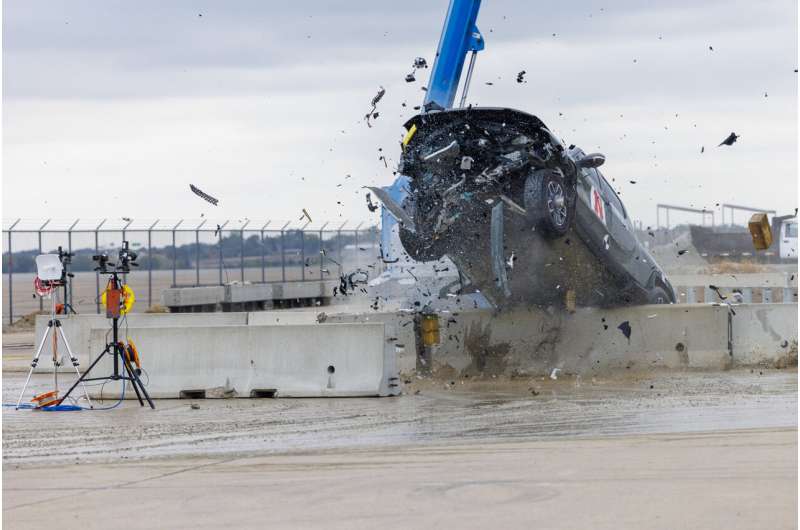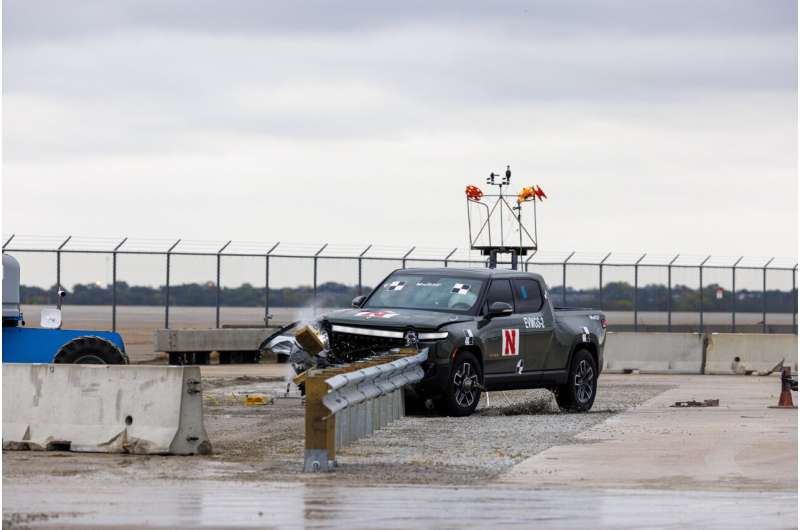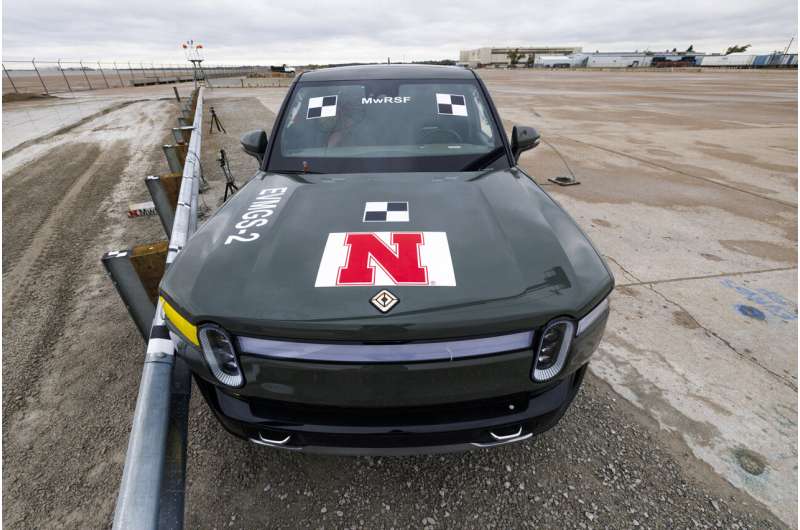
Electric vehicles that typically weigh more than gasoline-powered cars can easily crash through steel highway guardrails that are not designed to withstand the extra force, raising concerns about the nation's roadside safety system, according to crash test data released Wednesday by the University of Nebraska.
Electric vehicles typically weigh 20% to 50% more than gas-powered vehicles thanks to batteries that can weigh almost as much as a small gas-powered car. And they have lower centers of gravity. Because of these differences, guardrails can do little to stop electric vehicles from pushing through the barriers typically made of steel.
Last fall, engineers at Nebraska's Midwest Roadside Safety Facility watched as an electric-powered pickup truck hurtled toward a guardrail installed on the facility's testing ground on the edge of the local municipal airport. The nearly 4-ton (3.6 metric ton) 2022 Rivian R1T tore through the metal guardrail and hardly slowed until hitting a concrete barrier yards away on the other side.
"We knew it was going to be an extremely demanding test of the roadside safety system," said Cody Stolle with the facility. "The system was not made to handle vehicles greater than 5,000 pounds."
The university released the results of the crash test at a time when the rising popularity of electric vehicles has led transportation officials to sound the alarm over the weight disparity of the new battery-powered vehicles and lighter gas-powered ones. Last year, the National Transportation Safety Board expressed concern about the safety risks heavy electric vehicles pose if they collide with lighter vehicles.

Road safety officials and organizations say the electric vehicles themselves appear to offer superior protection to their occupants, even if they might prove dangerous to occupants of lighter vehicles. The Rivian truck tested in Nebraska showed almost no damage to the cab's interior after slamming into the concrete barrier, Stolle said.
But the entire purpose of guardrails, found along tens of thousands of miles of roadway, is to help keep passenger vehicles from leaving the road, said Michael Brooks, executive director of the nonprofit Center for Auto Safety. Guardrails are intended to keep cars from careening off the road at critical areas, such as over bridges and waterways, near the edges of cliffs and ravines and over rocky terrain, where injury and death in an off-the-road crash is much more likely.
"Guardrails are kind of a safety feature of last resort," Brooks said. "I think what you're seeing here is the real concern with EVs—their weight. There are a lot of new vehicles in this larger-size range coming out in that 7,000-pound range. And that's a concern."
The preliminary crash test sponsored by the U.S. Army Corps of Engineers' Research and Development Center also crashed a Tesla sedan into a guardrail, in which the sedan lifted the guardrail and passed under it. The tests showed the barrier system is likely to be overmatched by heavier electric vehicles, officials said.

The U.S. Federal Highway Administration declined to immediately comment on the Nebraska test results. The Electric Vehicle Association and the Alliance for Transportation Electrification, which support the use of electric vehicles, did not immediately respond to inquiries about the study.
The extra weight of electric vehicles comes from their outsized batteries needed to achieve a travel range of about 300 miles (480 kilometers) per charge.
© 2024 The Associated Press. All rights reserved. This material may not be published, broadcast, rewritten or redistributed without permission.
Citation: Crash tests indicate nation's guardrail system can't handle heavy electric vehicles (2024, January 31) retrieved 31 January 2024 from https://techxplore.com/news/2024-01-preliminary-nation-guardrail-heavy-electric.html
This document is subject to copyright. Apart from any fair dealing for the purpose of private study or research, no part may be reproduced without the written permission. The content is provided for information purposes only.
